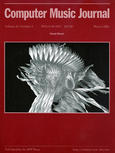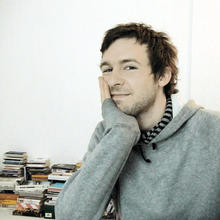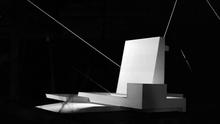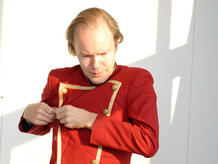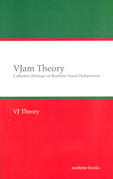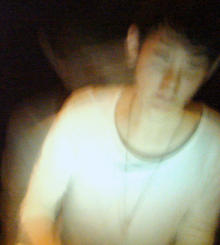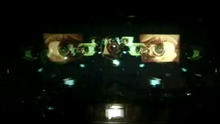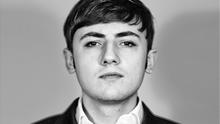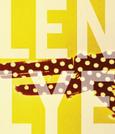Bonn Patternization
(2009)- original title: Bonner Durchmusterung is a sonification and visualisation of astrophysical phenomena by Marcus Schmickler (composition), Alberto de Campo (sonification) and Carsten Goertz (visualisation).
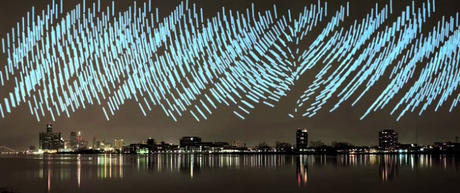
The eponymous starting point of our project is the Bonn patternization drawn up by the astronomer Friedrich Argelander (1799–1875) and his co-workers. This is not only the most historic work ever to have been conducted in Bonn; it also includes every star that can be seen in the night sky with the naked eye or a small telescope. The locations of the stars alter so little that today's night sky can still by-and-large be described by the data of the Bonn patternization.
For composition with data, a form must be found or invented that is both scientific and as consistent as possible. On the other hand much more fundamental questions arise concerning the relationship between data and reality of the observed objects, whose own nature, if there is one, is at first unknown. How does one come from a complex series of numbers to an understanding of the objects or even to a consistent phenomenology of the cosmos, and what role could sound play in this? Conversely there is an appeal in deriving interesting acoustic events and musical structures from complex theoretical models of particle physics and astrophysics.
Science today is the production of symbols and their usage: an immensely differentiated and efficient usage that creates knowledge and manipulates opinions. Their use is ambivalent, ancient and in part paradoxical. However it is seldom the picture to which the scientist provides the answer, but rather the content of the picture, which has come to be created through the intense distillation of a mathematical process.
As Kant described with his "Copernican change", we know that we do not observe the thing itself or even its own appearance, but rather the thing as it is for us; we mostly see just what we expect to see, which is why the history of astrophysics has produced a variety of completely different views of the world. Alongside the observed or calculated events it is also these knowledge processes that interest us in this project.
Visualization is the pictorial counterpart to sonification and already has a long tradition from the point of view of the scientific disciplines. We deal every day with the depiction of data, technical images – whether a pie chart or a computer-generated view of telescopic images – they are, for us, immediately readable and a self-evident part of our alphabet. We can observe that the repertoire of symbols seems constantly to broaden, indeed to become more specific. This pictorial process of alphabetization is becoming continually more important and constitutively effective as regards our conceptions of the world – because the social agreements on what reality is are to a considerable extent argued through pictures. That makes it necessary to use this alphabet not only with scientific methodology but also to shape it out of the other great visual discipline: art. Art often takes up a position antagonistic to science. It questions the applied grammar of the pictures by transferring technical images into other contexts of meaning, experimenting with alternative methods of picture production or just altering the algorithms.
Where science searches for universality, art attempts to formulate a singularity. That is anything but easy or undemanding; it can occur by means of an uncertain shot in the dark and often emerges as a distressing impossibility. It is not possible to methodically manufacture the unforeseeable as the regularity; difference is not easier than repetition. "Everywhere we seek the Absolute, and always we find only things." (Novalis, Blütenstaub)
In view of this evident dichotomy, however, it makes one wonder why Niels Bohr and Werner Heisenberg, of all people, after they had described quantum mechanics, saw in poetry something resembling the last way out for the ultimate science. The construction of reality, science and art is thus even more intricate, because the described antagonistic stance is only the simplest artistic position. In the same way, scientific aesthetics and methods are to a considerable extent verified in art and design or combined with the artist's own methods. Where the systems do not define themselves by means of opposing delimitations, but rather become involved in an interplay, a poetic interpretation, depiction and contextualization of scientific knowledge takes place. The political and social effects of science become visible. In this way a qualitatively new position is created that can be enriching in both directions. Literally enriching: a step forward towards a diverse understanding of reality, the spectrum broadened rather than simplified and consequently increasingly able to do justice to an endless cosmos. This much humility is only appropriate, as we are all – artists, scientists, philosophers and theologians – merely the plumbers of the universe, trying to plug the black holes in the drainpipe.
(Dr. Michael Geffert, Marcus Schmickler, Alberto de Campo, Carsten Goertz in May 2009)
The work was comissioned by Deutscher Musikrat and premiered as contribution to the International Year of Astronomy 2009 at Kunst- und Austellungshalle der Bundesrepublik Deutschland.

